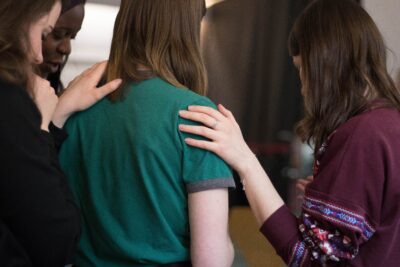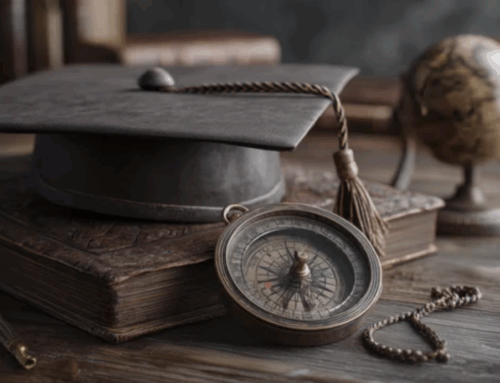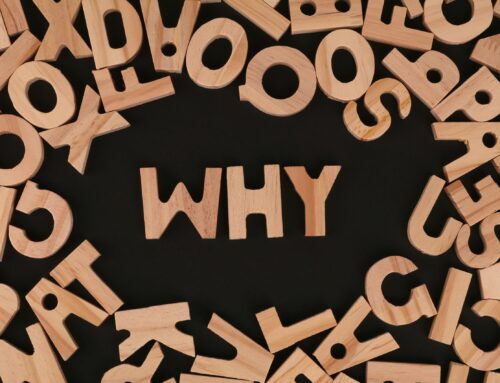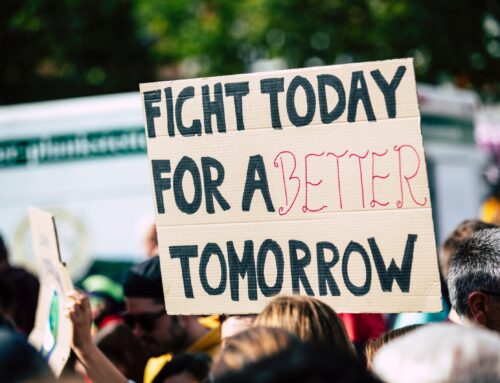In recent weeks, family, friends, and colleagues have messaged me with a somber warning: “Once you see it, you can’t un-see it.” That admonition holds that the impact of seeing something can be so strong and disturbing that the thing, once seen, cannot be erased from memory or diluted by the swirl of the many other things recently seen or witnessed. A variation, “Don’t look—you’ll wish you hadn’t” conveys a sharper, more strident warning: the immediate effects of seeing something could be so upsetting that one should avoid seeing it at all. Either of these constitutes a kind of universal content advisory (formerly called trigger warning); they are intended for anyone or everyone, regardless of their identity, personal history, or life experience, and not more specifically for a subgroup of people who may have a particular sensitivity or vulnerability. Once warned, we may look away. Or, motivated by some hybrid of curiosity and dread, we may go ahead and look—perhaps wishing later that we hadn’t.
Life presents any number of awful things that we might prefer not to see, or wish that we had not seen, and regret having to remember.
“Awful” includes horrifying, terrifying, disgusting, dreadful, and any number of other similar adjectives. Upon seeing such awful things, most of us will react both emotionally and physiologically, likely feeling shocked and stunned, lightheaded and nauseous. Hence the warnings.
Now, in this season of a terrible war in the Middle East, we face the challenge of encountering gruesome images, videos, and stories every day. No number or intensity of “content advisories” or admonitions from others is sufficient to protect us from seeing what cannot then be un-seen. War is inevitably an ugly, hateful, and tragic business; human beings—creatures built of the same materials and possessing the same kinds of minds and spirits as ours—are hurt, injured, damaged, or killed. But the flood of photographs, sound recordings, and videos emerging from the attacks on Israel and the fighting in Gaza presents something altogether different from the “usual and customary” documentation of the cruelty of war and its consequences for human beings. “Don’t look—you’ll wish you hadn’t”—because what we have seen, and continue to see, is beyond terrible, more than despicable, and of a greater order of magnitude than dreadful, or terrifying. What human beings have done, and done intentionally, to each other is beyond rational comprehension. “Once you see it, you can’t un-see it”—men and women, mothers and fathers, children, infants, newborns, all of them bloodied, fractured, torn apart, dismembered, discarded, dead. On the way to their death, many of them beaten, tortured, or raped—knowing only terror and pain in the last moments of their lives. This is a catastrophic milestone marking the descent of humanity, and it now seems likely that the milestone will not be a capstone—that we will see worse before we know peace.
“Don’t look,” but of course we do, and we must, look.
Thousands of civilian victims, no matter their race, ethnicity, nationality, or religion, had no choice; they had to see, know, and feel what was happening to them. Those of us who have the privilege—the enormous, unmeasurable privilege—of not living or dying in person through the battles in the Middle East must not so brutally abstract ourselves from the people who are suffering there that we can comfortably (or uncomfortably) look away. There is really no way to comprehend this; what is happening in Israel and Gaza must be felt as much, or more, than it can be described, analyzed, and understood.
We know it is felt on our campuses and in our streets, even far from the Middle East. Think about the recent experience of Jewish students in American colleges and universities—orthodox or reform, Zionist or not, and regardless of their views about Israel. The sharp sword of anti-semitism pierces them with fear. How do they “un-see” the death threats from fellow students; how do they “un-hear” the casual or practiced stereotyping of Jews in a classroom? Think also about the experience of Palestinian students; how do they “un-do” the wrongful one-for-one equating of Palestinians with Hamas? Any of us may view the politics of the region and the layers of fault borne by all of the leaders and their armies differently—but we must acknowledge suffering and loss wherever, and to whomever, they occur.
Our obligation to students is not differentiated by their demographics, beliefs, or affiliations.
As people suffer through this latest war’s second month, a kind of exhaustion may make “don’t look” seem a better choice. But the ancestry of “don’t look” is not looking, and it has been our collective unwillingness to look deeply at hard problems involving human suffering that has sustained many of those conflicts.
The hard truth is that we continue to live with so much hatred, fighting, suffering, and carnage precisely because we have been all too willing to not look, or to glance just briefly, at unstable, fragile tensions and simmering conflicts before they explode onto the front page or the home screen. Out of sight, out of mind is a failed strategy.
Deadly conflict in the Middle East did not begin in October, 2023; generations and decades of unvarnished hatred and centuries of painful, bloody history are the sad underlayment for the horror we now witness nearly every hour. The Russian invasion of Ukraine in 2022 is now approaching two years of age; don’t look, but civilians and children have died miserable deaths of war there too, and the roots of that conflict extend back far more than those two years. Centuries of hatred and violence fueled by political, social, and religious differences preceded the formation of Northern Ireland. We can name far too many countries and cultures in which there has been some particular form of genocide—Armenia, Darfur, Rwanda, Bosnia, Native Americans, on and on. Hatred has a long history, including here, in the United States.
Think of other collective moments of “you can’t un-see it” and “don’t look.”
Remember, though it’s intensely painful to do so, the horrifying bystander videos of the murder of George Floyd, a 46 year old Black man, in Minneapolis, MN at the hands of and by the knee of Derek Chauvin, a 44 year old white policeman in May 2020. The video of the hunting down and murder of Ahmaud Arbery, a 25 year old Black man, by three white men in Glynn County, Georgia in February 2020. The video of the murder of Tyre Nichols, a 29 year old Black man, by five police officers in Nashville, TN in January of this year. Too far back for a video, the abduction, torture, and lynching of Emmett Till, a 14 year-old Black boy, by two White men in Drew, MS in 1955. The murder of 29 patrons in Pulse, a gay nightclub in Orlando, FL, in 2016. The death by arson of 31 people at the Upstairs Lounge, a gay bar in New Orleans, in 1973. The unmarked graves of hundreds of Indigenous children who died in Native American Boarding Schools operated by the US government or churches. The stories of about 300 Lakota men, women, and children massacred by the US Army at Wounded Knee in 1890.
There are, of course, more—many more. Wars, hate crimes, genocides. Seeing (live, or in historical records) something as deeply and darkly disturbing and upsetting as any of these creates un-erasable memories and distressing feelings. The ongoing occurrence of yet more wars, hate crimes, and genocides is painfully discouraging because it reveals the persistence of an invidious pattern of hideous human behavior. Watching the video recordings of the murder of George Floyd, for example, inevitably raises awful questions about anti-Black racism, white supremacy, and slavery. What must life in slavery have been like? The death of Tyre Nichols in Nashville in January is connected to the lynching of Emmett Till in 1955.
“Once you see it, you can’t un-see it” therefore means “once you’ve seen it, you can’t escape what it means and the patterns it represents.”
Just as underneath the war in Israel and Gaza are years and years of anger, hate, and pain, so it is that underneath the murders of Emmett Till, Tyre Nichols, Armaud Arbery, and George Floyd (and many others not named here) are years and years of racialized hatred, prejudice, and injustice. But a dangerous and deceptive form of “don’t look” is now being applied to all of that history, and especially to the monolith of slavery, the very existence of which demonstrated and reflected the inhumane ideology inherent in white supremacy. “Don’t look”—don’t teach about slavery, don’t acknowledge white supremacy, don’t point out the hateful practices of dehumanization that allowed both the sale of human beings as slaves and the murder of George Floyd. Usually clothed in the deceptive fabric of “not being divisive,” schools and colleges in many parts of the country forced to teach history (if you can call it that) under increasingly specific governmental restrictions against educating students about race, racism, and slavery. This so-called “anti-woke” perspective celebrates a unified, equitable, and inclusive America that has never existed. “Don’t look”—knowing what the lives and suffering of Black slaves were like might provoke questions about the happy illogic of saying that slaves “learned valuable skills.” “Don’t look”—documenting the travesties of native American boarding schools might lead students to question everything from the alleged inferiority of Indigenous peoples to the rituals and customs of Thanksgiving.
So then arises the terrible choice: look, and be alarmed and ashamed—or don’t look, and try to be comfortable, or at least act like you are.
The reports, images, and stories of actions by governments and armed forces in the Middle East are driving our students—and us—to look. Looking closely brings not just knowing, but feeling; we look, we’re shocked, we’re saddened, we’re disgusted, we wonder. Students are learning quickly how earnestly one people can hate another, and how one student can hate another—how people, individually and collectively, can get brittle and be cruel. How ordinary human beings can commit outrageous atrocities. Students, and some of us, are discovering fear as a palpable presence in our lives.
Arguments about right and wrong, what actions in this and other wars are or are not justified, and what words and rhetoric are appropriate and acceptable will continue. We, as educators and administrators who care about and support students, will not likely alone resolve those differences, and almost certainly those differences will not be soon resolved to the mutual satisfaction of combatants, stakeholders, or leaders.
But what we must do in this time of fear, hate, and anger is clear in our shared mission, purpose, and values. We must ensure the safety and promote the well-being of all in our campus communities. We must not tolerate discrimination, violence, or threats of violence on any basis; we must not countenance hate speech.
In our work with students and student groups, we must remember what they have had to see, and cannot un-see; what they have had to hear, and cannot un-hear; what they have witnessed, and cannot forget; what of their beliefs, and hopes, and dreams have been irrevocably tarnished or extinguished. We are called in our work with them to look—not to look away, but to look with compassion as we work—very hard—for peace.
Richard P. Keeling, MD, Chairman of Keeling & Associates, LLC, wrote this essay for the Council for the Advancement of Standards in Higher Education (CAS) and presented it at their Council of Representatives meeting on November 13, 2023.
Keeling & Associates, LLC is a comprehensive higher education consulting and professional services firm that creates “change for learning” through its consultation, advisory, and executive search professional services across North America. Let’s create change for learning together.







Leave A Comment